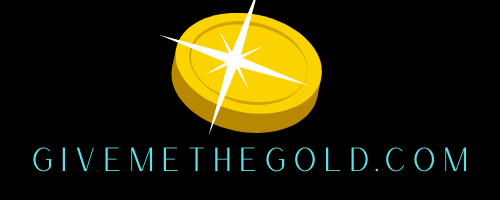Affiliate Disclosure: The owners of this website may be paid to recommend the following companies: Goldco, Augusta Precious Metals, Noble Gold Investments, Birch Gold, and Regal Assets. The content on this website, including any positive reviews of the mentioned companies, and other reviews, may not be neutral or independent.
Introduction to Diversifying with Precious Metals
In today’s unpredictable financial landscape, diversification has become increasingly important for investors looking to mitigate risk and preserve wealth. While traditional investment assets like stocks and bonds play a vital role in portfolio construction, many individuals are exploring alternative options, including precious metals.
Importance of portfolio diversification
Diversification is the practice of spreading investments across different asset classes to reduce exposure to any single risk or asset. By diversifying, investors aim to achieve a balance between risk and return, maximizing the potential for long-term growth while minimizing volatility.
Role of precious metals in investment strategies
Precious metals, such as gold, silver, platinum, and palladium, have long been valued for their intrinsic worth and historical significance. Beyond their aesthetic appeal, these metals serve as tangible assets that can act as a hedge against economic uncertainty and inflation.

Benefits of Adding Gold to Retirement Portfolio
Hedge against market volatility
Gold has a unique ability to retain its value during periods of market turbulence. Unlike paper currencies or financial assets, which are subject to fluctuations in market sentiment, gold tends to maintain its purchasing power over time, making it an effective hedge against volatility.
Preservation of purchasing power
Inflation erodes the value of fiat currencies, reducing the purchasing power of savings and investments. Gold, however, has historically served as a store of value, preserving wealth and purchasing power even in times of high inflation.
Inflation protection
As central banks around the world continue to implement expansive monetary policies, concerns about inflation are on the rise. Gold has a proven track record of outperforming other assets during inflationary periods, making it an attractive addition to retirement portfolios seeking to safeguard against rising prices.
See Our Top Recommended Gold IRA Companies for 2024
GiveMeTheGold.com’s expert team has analyzed and chosen the best of the best companies to work with in the Gold IRA space. Whether you are looking to roll over a 401k or Traditional IRA into a Gold IRA, a Silver IRA, or other type account, these top companies can help you with the entire process.
To see the text article click here or the banner below. Also, watch the video report below as well.
Best Gold IRAs Companies for 2024: See Our Video Report
Types of Precious Metals for Investment
Gold
Gold is the most widely recognized precious metal and has been used as a form of currency and store of value for thousands of years. Investors can purchase physical gold in the form of bullion bars or coins, as well as through gold-backed exchange-traded funds (ETFs) or mutual funds.
Silver
Silver is often referred to as “the poor man’s gold” due to its lower price point and widespread availability. Like gold, silver can be purchased in physical form or through ETFs and mutual funds, offering investors a more affordable option for diversifying their portfolios.
Platinum
Platinum is a rare and valuable metal that is commonly used in jewelry, automotive catalytic converters, and industrial applications. While less commonly traded than gold and silver, platinum can still serve as a valuable diversification tool for investors seeking exposure to precious metals.
Palladium
Palladium is a relatively recent addition to the precious metals market but has quickly gained popularity due to its use in catalytic converters and electronic components. Like platinum, palladium offers investors an alternative to gold and silver for diversifying their investment portfolios.

Process of Investing in Precious Metals
Purchasing physical bullion or coins
One of the most straightforward ways to invest in precious metals is to purchase physical bullion or coins from reputable dealers. Physical metal ownership provides investors with tangible assets that can be stored securely or easily liquidated when needed.
Investing in precious metal ETFs or mutual funds
For investors seeking exposure to precious metals without the hassle of physical ownership, ETFs and mutual funds offer a convenient alternative. These investment vehicles allow investors to gain exposure to gold, silver, platinum, or palladium through shares traded on stock exchanges.
Opening a precious metal IRA
Similar to a traditional IRA or Roth IRA, a precious metal IRA allows individuals to invest in precious metals within a tax-advantaged retirement account. By opening a precious metal IRA, investors can enjoy the benefits of diversification while potentially reducing their tax liability.

Tax Implications of Investing in Precious Metals
Capital gains tax
Profits realized from the sale of precious metals are generally subject to capital gains tax, which varies depending on factors such as holding period and individual tax bracket. It’s essential to consult with a tax advisor to understand the tax implications of investing in precious metals.
Reporting requirements
Investors who buy or sell precious metals may be required to report transactions to the IRS, depending on the type and value of the metal involved. Failure to comply with reporting requirements can result in penalties or fines, so it’s crucial to stay informed about your tax obligations.
Tax-deferred accounts
Investors can mitigate tax liabilities associated with investing in precious metals by holding them within tax-deferred retirement accounts such as IRAs or 401(k)s. By deferring taxes on investment gains until retirement, investors can potentially maximize their returns and reduce their overall tax burden.
Risks and Considerations
Price volatility
Like any investment asset, precious metals are subject to price volatility, which can lead to fluctuations in portfolio value. Investors should be prepared for short-term price movements and adopt a long-term perspective when investing in precious metals.
Storage and security
Physical ownership of precious metals requires proper storage and security measures to protect against theft or damage. Investors can choose to store their metals at home, in a bank safe deposit box, or with a reputable custodian specializing in precious metal storage.
Market liquidity
While gold and silver are highly liquid assets that can be easily bought and sold, other precious metals such as platinum and palladium may have lower levels of market liquidity. Investors should consider the ease of buying and selling precious metals when constructing their investment portfolios.
Strategies for Effective Portfolio Diversification
Asset allocation
Diversification begins with asset allocation, the process of dividing investments across different asset classes based on risk tolerance, investment goals, and time horizon. By spreading investments across equities, fixed income, real estate, and precious metals, investors can achieve a balanced portfolio that aligns with their financial objectives.
Rebalancing
Periodic rebalancing is essential for maintaining an optimal asset allocation and mitigating portfolio drift. By periodically reviewing and adjusting investment allocations, investors can ensure that their portfolios remain aligned with their long-term financial goals and risk tolerance.
Dollar-cost averaging
Dollar-cost averaging involves investing a fixed amount of money at regular intervals, regardless of market conditions. This strategy can help investors smooth out market fluctuations and take advantage of buying opportunities during periods of market volatility.
Conclusion
Diversifying with precious metals offers investors a valuable opportunity to protect and grow their wealth in today’s uncertain economic environment. Whether through physical ownership or investment vehicles such as ETFs and mutual funds, precious metals can play a crucial role in a well-rounded investment portfolio. By understanding the benefits, risks, and tax implications of investing in precious metals, individuals can make informed decisions to achieve their financial goals and secure their future prosperity.




